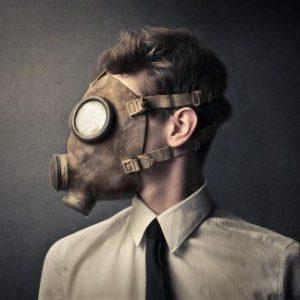Air quality is a significant concern for homes and businesses alike. The technological and material demands of modern life mean that more and more pollutants are being released into the atmosphere. Unknowingly we breathe in a host of noxious particulates and trace gases, many of which can adversely affect our health. Though shielded from vehicular and industrial emissions, indoor air fares no better in the air quality stakes. Much of what we breathe is recycled from the outside and then combined with indoor contaminants such as dust, mould, asbestos and vapour from cosmetics and cleaning products. Poor ventilation and faulty heating systems cause a build-up of undiluted air, thereby increasing the chance of exposure to harmful pollutants.
Air quality hazards
Although some are at greater risk than others (those who work in the manufacturing, construction or cleaning industries to name a few), no one is completely safe from the hazards of indoor air. Seemingly unaccountable instances of ill health (headaches, dizziness, nausea, poor concentration, allergic reactions etc.) are not uncommon in the workplace and may in fact be related to indoor air quality. Tobacco smoke, perfume and other VOCs from new furnishings and electrics combine with ozone to produce unpleasant smells, skin irritation and even breathing difficulties. Although symptoms vary from person to person, both in type and severity, they are grouped together under the term Sick Building Syndrome (SBS). SBS is a wide-ranging yet poorly understood phenomenon with major implications not only for individual health but also productivity and wellbeing in the workplace. Characterized by a series of subjective health complaints, and therefore undiagnosable in strict medical terms, SBS has, by some, been seen as a product of (post)modern health-and-safety hysteria (‘a diversity of ill health effects, mostly minor and associated with a building, for which [there is] no specific cause’). And yet it is precisely this lack of specificity that makes it such an interesting, research-worthy phenomenon. Michelle Murphy, author of Sick Building Syndrome and the Problem of Uncertainty, conjectures that certain ‘power regimes’ (here she cites chemical corporations, tobacco companies, manufacturers and even some government organisations) are in fact capable of manipulating air sampling data in such a way that befits their anti-regulation agenda. Whether this is true or just another conspiracy theory exceeds the scope of this post, but it certainly makes for interesting debate!
SBS management strategy
Whilst the problem of uncertainty grows, it seems wholly appropriate that some sort of SBS management strategy be implemented, particularly in areas where issues of productivity are at stake. Of course, the fact that no two buildings are exactly alike makes this exceedingly difficult, as there can be no ‘one-size-fits-all’ solution. It is therefore imperative that high-risk indoor spaces be individually assessed to investigate further the causes of SBS. Air sampling seems like a sensible place to start.








